Remember the nursery rhyme about Little Jack Horner? More later …
After a stop at the local Jeep dealer to have a brake issue looked at … and repaired (fortunately at no charge), we left Elkins, heading south toward the National Radio Astronomy Observatory (“NRAO”) in Green Bank, WV.
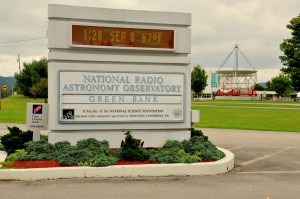 It is home to a dozen radio telescopes,
It is home to a dozen radio telescopes,
 of which the Robert C. Byrd Green Bank Telescope is the observatory’s most important and best known telescope.
of which the Robert C. Byrd Green Bank Telescope is the observatory’s most important and best known telescope.
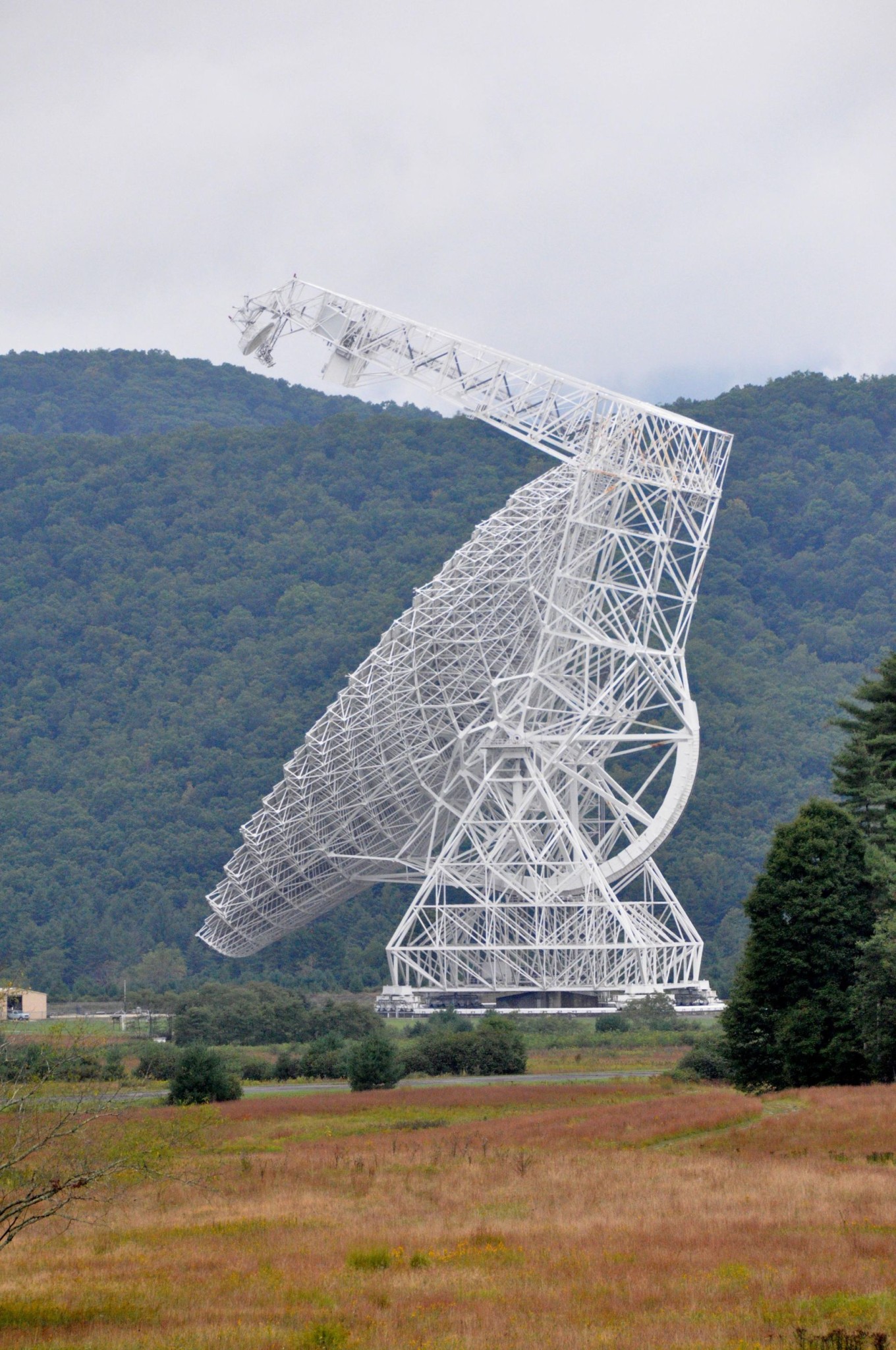 The observatory sits near the heart of the United States National Radio Quiet Zone (a 13,000 square miles area),
The observatory sits near the heart of the United States National Radio Quiet Zone (a 13,000 square miles area),
a large area where all radio transmissions are limited to avoid emissions toward the GBT and the Sugar Grove Research Facility, West Virginia. The existence of the telescope within the Radio Quiet Zone allows for the detection of faint scientific signals which otherwise would be eclipsed by man-made signals. The observatory borders the National Forest and is shielded from radio interference by the Allegheny Mountains.
 This helps to explain why we’ve had no luck in using our 4G “hot spot” for the past several days at campgrounds within the Radio Quite Zone
This helps to explain why we’ve had no luck in using our 4G “hot spot” for the past several days at campgrounds within the Radio Quite Zone
In fact, to even enter the area of the observatory’s property where the telescopes are located,
all electronics, including cell phones and digital cameras, must be turned off prior passing through the gate.
 Therefore, all of our photographs of the observatory’s telescopes were taken prior to entering the restricted area.
Therefore, all of our photographs of the observatory’s telescopes were taken prior to entering the restricted area.
These quiet zone requirements are so rigid that only certain vehicles are allowed within the operating theater of the telescopes. Such vehicles do include a fleet of 1950-era cars and trucks obtained from the US Navy (as they have no spark plugs) and certain new, low-radio frequency emission hybrid buses (including those used for tours).
 When outside radio emissions are identified, one of a fleet of vehicles
When outside radio emissions are identified, one of a fleet of vehicles
 is dispatched to investigate, and if originating from within the Radio Quiet-Zone, shut the offending source down.
is dispatched to investigate, and if originating from within the Radio Quiet-Zone, shut the offending source down.
The Robert C. Byrd Green Bank Telescope (GBT) is the world’s largest fully steerable radio telescope. The telescope honors the name of the late Senator Robert C. Byrd who represented West Virginia and who pushed the funding of the telescope through Congress.
The GBT has an active surface area of 2.3acres (100m x 110m) with 2,209 actuators (a small motor used to adjust the position) for the 2,004 surface panels (each the size of a queen-sized mattress). The panels are made from aluminum to a surface accuracy of better than 0.003 inches. The actuators adjust the panel positions to correct for distortions due to gravity which change as the telescope moves.
Unusual for a radio telescope, the primary reflector is an off-axis segment of a paraboloid. This is the same design used in familiar home satellite television dishes: the asymmetric reflector allows the telescope’s focal point and feed horn to be located at the side of the dish, so that it and its retractable support boom do not obstruct the incoming radio waves, as occurs in conventional radio telescope designs with feed located on the telescope’s beam axis.
The GBT is designed to handle a wide range of wave-lengths from 3-meter to 3-milimeter and operational frequencies range from 290 MHz to 100 GHz.
Its height is 485 feet (60% taller than the Statue of Liberty) and weighs 17 million pounds. Yet, despite its size and weight, the GBT can be pointed with an accuracy of one arcsecond (equivalent to thickness of a human hair as seen from 66 feet away).
The GBT operates 24 hours a day in all-weather collecting radio waves across the universe. Because the GBT is fully steerable, and 85% of the entire celestial sphere is accessible. Its operation is highly efficient, and it is used for astronomy about 6500 hours every year, with 2000–3000 hours per year going to high frequency science. Part of the scientific strength of the GBT is its flexibility and ease of use, allowing for rapid response to new scientific ideas. I t is scheduled dynamically to match project needs to the available weather. The GBT is also readily reconfigured with new and experimental hardware, adopting the best technology for any scientific pursuit.
The high sensitivity mapping capability of the GBT makes it a necessary complement to the Atacama Large Millimeter Array, the Expanded Very Large Array, the Very Long Baseline Array, and other high angular resolution interferometers. Facilities of the Green Bank Observatory are also used for other scientific research, for many programs in education and public outreach, and for training students and teachers.
There are a number of other operating radio telescopes at the observatory. These include:
45-foot Telescope

This 45-foot steerable telescope is working alongside the Russians in tracking a small orbiting radio telescope called “Radio Astron”.
85-1 Tatel Telescope
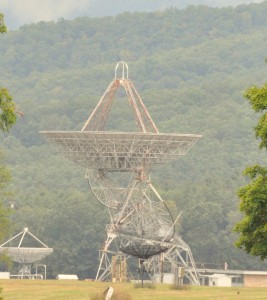
Operational since 1959, this telescope is the NRAO’s oldest. One of the first astronomers employed at NRAO launched the first ever Search for Extraterrestrial Intelligence (“SETI” … . originally named OZMA, after the mythical Land of Oz) in 1960 using this telescope). The telescope is one of three 85-foot telescopes on site which at one time formed an interferometer system that served as the test system for the Very Large Array (“VLA”) in New Mexico.
40-foot Telescope
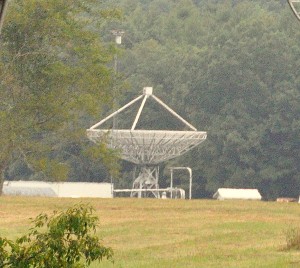
This telescope was built in 1962 to determine if the intensity of some sources varied with time. The telescope is now being used by teachers and students from across the country for research projects that they design themselves.
140-foot Telescope

Completed in 1965, it is the largest equatorial mounted telescope in the world. It was the NRAO’s primary telescope until its retirement in 1999. Its accomplishments included the first detection of a polyatomic molecule in the interstellar medium and about half of all the known molecules in outer space which have transitioned at centimeter wave lengths.
It also first detected the H1 absorption arising from another galaxy. Anecdotally, a number of years ago, the telescope was angled on its side so that its computers could be updated by technicians on a raised platform … and when they had some problems, the men let loose with some “earthy” language. Shortly thereafter, the NRAO commanding officer received a call from a Methodist church where the women working there were complaining that they heard every word uttered by the techs. It seems that with the telescope on its side, its parabola shape focused the technician’s words at the church. Soon afterwards, a shack was constructed on the platform to prevent a similar incident in the future.
The NRAO also had an excellent, hands-on museum explaining the nature of radio astronomy its history and some of its discoveries … both inside
One of the most perplexing and intriguing questions … Are we alone and, if so, what are the chances of discovering another civilization in the universe??
Using Drake’s Equation
N = R x f(p) x R(e) x f(i) x f(i) x f(c) x L
Where
N = the number of communicating civilizations
R = the rate of star birth (estimated: 10 per year)
F(p) = the fraction of those stars with planets around them
N(e) = the number of planets per solar system with an environment suitable for life (estimated: 1 or 2)
F(i) = the fraction of those planets where life has evolved where intelligence appears (estimated: 1%)
F(c) = the percentage of those civilizations will develop technologies to communicate and will use it (estimated: 50%)
L = How long will an intelligent civilization last (estimated: 100 , the time people of earth have been communicating)
Therefore: N = 10 x .5 x 1 x .02 x 1 x .05 x 100 = 50 – The best guess as to the number of communicating civilizations … and if a communicating civilization lasts for a million years, there may be millions of undiscovered civilizations
and on its grounds.
The Jansky Antenna

This is an exact replica of the antenna Karl Jansky used when he discovered, by accident, radio waves coming from the center of the Milky Way. Jansky designed and built the rotating antenna in 1928 to identify the courses of static that might interfere with radio communications.
The Reber Telescope

The world’s first parabolic dish radio antenna was built in 1937 by Grote Reber in his Illinois backyard out of lumber and metal. When no one else was interested, Reber continued Jansky’s work, investigating cosmic radio waves. Reber authorized it relocation toe Green Bank in 1960.
Ewen – Purcell Antenna

This horn antenna was used in the first detection of radio emissions from hydrogen in the Milky Way.
Relative Distances of the Planets from One Another

Using a series of ten monument, beginning with one making the location of the sun, just outside the non-interference gate, and each of the planets (including the former planet, Pluto) showing their relative distances from the sun and each other .. using a scale of 1-foot being equal to 3 billion feet … in the above photo, you can see Mercury, Venus, Earth and Mars … and if you look very closely Jupiter and Saturn. Pluto, however, is located close to the large Byrd Telescope some 2 miles away … its flag both black and at half-staff since its demotion to a “dwarf planet”.
When thinking about cranberries, Massachusetts probably comes to mind (they’re #2 behind Wisconsin and ahead of New Jersey, Oregon and Washington. But, West Virginia?
Our next destination was West Virginia’s Cranberry Wilderness. As the day was getting late, we only had time to visit the museum .


And take a walk through the Cranberry Glades

The natural history of the 750 acre area is of special interest, the most outstanding feature of the “Glades” is the open bogs nestled in a natural bowl at an elevation of 3,400 feet. The “Glades” resemble an arctic tundra misplaced in the state’s mountains … where many of the same rare plants, birds, mammals and even reindeer moss which are commonly found in Bogs in the far north exist in this Monongahela landscape.
As are several unique flowers and other types of berries.




We then opted to drive the Highland Scenic Highway enroute back to our campground. In clear weather, the road which climbs to 4,545 feet can afford spectacular views … and likely gorgeous when the foliage is in full bloom later this month. However, as our elevation increased, all we saw were the approaching cloud bases which got closer and closer
 until we were surrounded by a light fog.
until we were surrounded by a light fog.
Finally descending back into the valley, the drive back to our campground wound along treed hillsides
 and at other times lined with fields of ragweed.
and at other times lined with fields of ragweed.
 Then, there are the relics of bygone days which you can’t miss.
Then, there are the relics of bygone days which you can’t miss.


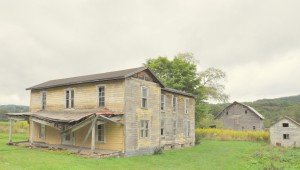



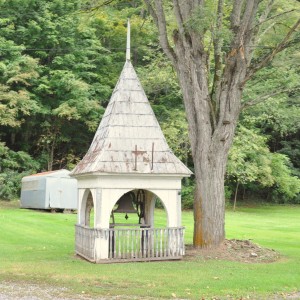
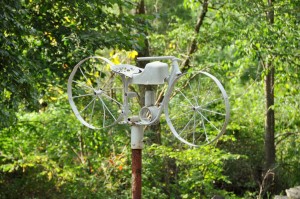
I almost forgot … Little Jack Horner who, wew all know, sat in a corner. Betcha, you’ve wondered just where that corner was. Well, we found it!



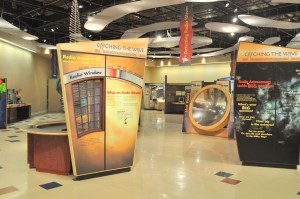
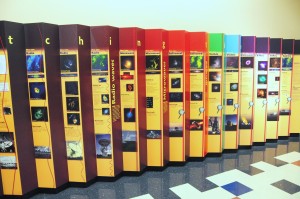


Thanks for your informative and picturesque posting about the Greenbank site. It is definitely on my list of places to see, and your post made it even more attractive.
Hi there! This is my first comment here so I just wanted to give a quick shout out and say I genuinely enjoy reading your posts. Can you recommend any other blogs/websites/forums that cover the same topics? Thank you so much!